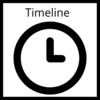According to your start and end dates ( 2026-01-10 to 2026-01-18 ),
you have 8 days to finish your assignment.

Your steps
Click on the steps to expand or collapse. Expand All Steps (+)Step 1: Get started
Complete by Sat Jan 10, 2026
Percent time spent on this step: 10%
A. Understand the assignment
Determine exactly what the assignment asks you to do. Read the assignment carefully to determine the topic, purpose, audience, format, and length. For more information, see Understand your assignment.
B. Develop your research question
A research question guides your research. It provides boundaries, so that when you gather resources you focus only on information that helps to answer your question. See Develop a research question.
Step 2: Research
Complete by Tue Jan 13, 2026
Percent time spent on this step: 30%
A. Design your research strategy
When conducting research for the literature review, you should put some thought into where and how you will search.
- Where to search – first and second stage databases (PDF)
- Effective research strategies (PDF)
B. Search
For help on how to conduct research, see Conducting research and note taking (PDF).
C. Evaluate sources for alignment with your topic
After collecting resources, evaluate and appraise the content for fit with your topic. The following resources provide guidance on making these choices:
- The Libraries' RADAR Framework module can help you conduct an initial evaluation of your sources
- Critical appraisal (PDF) provides a more detailed source evaluation process widely used in health fields
- The Libraries' Assessing Source Quality (beyond RADAR) module for additional approaches to source evaluation
D. Read critically
Read critically and take quality notes to ensure a thorough understanding of the material. The following resources provide guidance on these tasks:
- A beginner's guide to notetaking
- How to take better notes
- 5 steps to get the most out of your next reading
Step3: Organize your literature review
Complete by Wed Jan 14, 2026
Percent time spent on this step: 20%
A. Identify themes
Analyze your research to find trends and relationships across different sources. Here are some organizational patterns to look for:
- Similar concepts, theories, themes
- Organizational patterns
- Regional focus
- Data range
- Historical development
- Problem-solution
See the resource How to think: moving from research to writing for information on how to use your sources to establish themes and find connections.
B. Organize
Using the organizational patterns previously identified, plan your literature review. Download Organizing your research: the outline approach (DOC) to get started.
C. Develop a thesis
Using the themes and conclusions you identified in the previous steps, develop a thesis statement that captures the overall state of the current research for your topic. See the resource Thesis statements.
Step 4: Write the first draft
Complete by Fri Jan 16, 2026
Percent time spent on this step: 20%
A. Verify the style guide requirements
Check with your course outline or instructor for the style guide you need to use (e.g. APA, Chicago, IEEE, MLA). Consult the citation modules and infographics from the UW Libraries' to learn more about the style for your class.
B. Write the introduction
Give the reader background on your topic and explain why the topic is worth studying. The introduction can also include:
- Scope
- A clear articulation of the problem
- Your thesis
- An overview of how you’ve organized your literature review
C. Write your body paragraphs
Build each body paragraph on one of the connecting themes you discovered. Consider what several different sources have said about that theme and synthesize the information to show connections across the various sources.
Sometimes the sources will agree, sometimes they will not, and sometimes they may agree partially but with certain limits. It is your job to describe and interpret how the sources interact, then evaluate the current trends in research.
A special note about integrating sources
Integrating sources and citing them takes on significant importance in a literature review. Since you are synthesizing many other sources, be careful about how you reference them. Ensure your sources flow smoothly into the main text of your review. See the following resources for tips on how to do this well.
Making sources talk to each other (PDF)
Author prominent vs information prominent citations (PDF)
D. Write a conclusion
Write a conclusion that summarizes the themes and key findings of your review. Key findings most often reveal something is missing in the literature, often referred to as the gap. If your literature review is a standalone document, the gap will suggest a possible path for future research. If your literature review is a part of a larger project, the gap provides a justification for the rest of your research.
If you would like to see a sample format for the final literature review, see this link: WriteOnline - Literature Reviews (PDF).
Step 5: Revise and Proofread
Complete by Sun Jan 18, 2026
Percent time spent on this step: 20%
A. Evaluate your first draft and conduct additional research as needed
Determine if there are any gaps in your draft. Do you have enough evidence to support your arguments? If you do not, you should conduct further research.
B. Revise your draft
Print out your paper and work from a hard copy. Read it carefully and look for higher order problems first, such as organization, structure, and evidence and analysis. For more help with these higher order issues, check out Tips for revision.
C. Evaluate your second draft and rewrite as needed
Narrow your focus to paragraph-level issues such as flow and transitions. See Transition words and phrases for help.
D. Proofread and put your paper into its final format
Last step! Read carefully to catch all those small errors. Here are some Proofreading strategies. Also take time to make sure your paper adheres to the conventions of the style guide you're using. Think about titles, margins, page numbers, reference lists, and citations.
Tips for writing:

